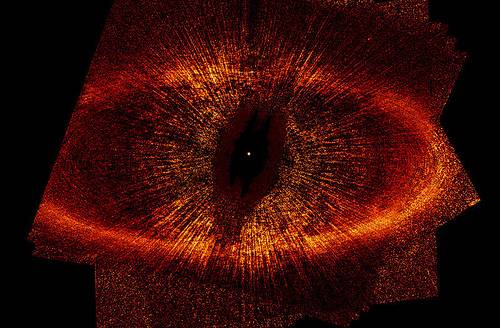
The international symbol for recycling depicts a Möbius strip.

The international symbol for recycling depicts a Möbius strip.
In 1984, a pet kitten was given to Koko, the Stanford University gorilla who communicates through sign language.
She cared for it as a baby gorilla until December of that year, when the cat escaped from her cage and was run down by a car.
When her trainers told Koko what had happened, she gave the signs for two words.
They were “cry” and “sad.”
The statement “no statements are true unless they can be proven scientifically” cannot be proven scientifically.
31
331
3331
33331
333331
3333331
33333331
… are all prime, but 333333331 = 17 × 19607843.
a + b = c
4a – 3a + 4b – 3b = 4c – 3c
4a + 4b – 4c = 3a + 3b – 3c
4(a + b – c) = 3(a + b – c)
4 = 3

It’s been known since 1876 that 267-1 isn’t prime, but for decades no one knew what the factors were.
Then, at a meeting in 1903, mathematician Frank Nelson Cole gave an hourlong “lecture” in which he didn’t say a word. On one chalkboard he expanded the value of 267-1:
147,573,952,589,676,412,927
On another he wrote:
193,707,721 × 761,838,257,287
Then he multiplied those values by hand. The two boards matched. He had found the factors. Cole returned to his seat amid a standing ovation.
He later admitted that finding the factors had taken “three years of Sundays.”
Isaac Asimov proposed this mnemonic for a famous constant:
How I want a drink, alcoholic, of course, after the heavy lectures involving quantum mechanics!
Count the letters in each word and you’ll get 3.14159265358979.

The bitterest thing in the world is denatonium, a compound discovered by Scottish researchers in 1958. Most people find its taste unbearable even in dilutions of 10 parts per million.
A New York chemist once went home with a trace of denatonium saccharide on his lip. He kissed his wife and she almost threw up.
1 + 4 + 5 + 8 = 18
18 × 81 = 1458
1 + 7 + 2 + 9 = 19
19 × 91 = 1729

The Eye was rimmed with fire, but was itself glazed, yellow as a cat’s, watchful and intent, and the black slit of its pupil opened on a pit, a window into nothing.
That’s a quote from The Fellowship of the Ring, but this image is actually a star. Fomalhaut, 25 light-years away, is one of the brightest stars in the night sky.
Draw your own conclusions.